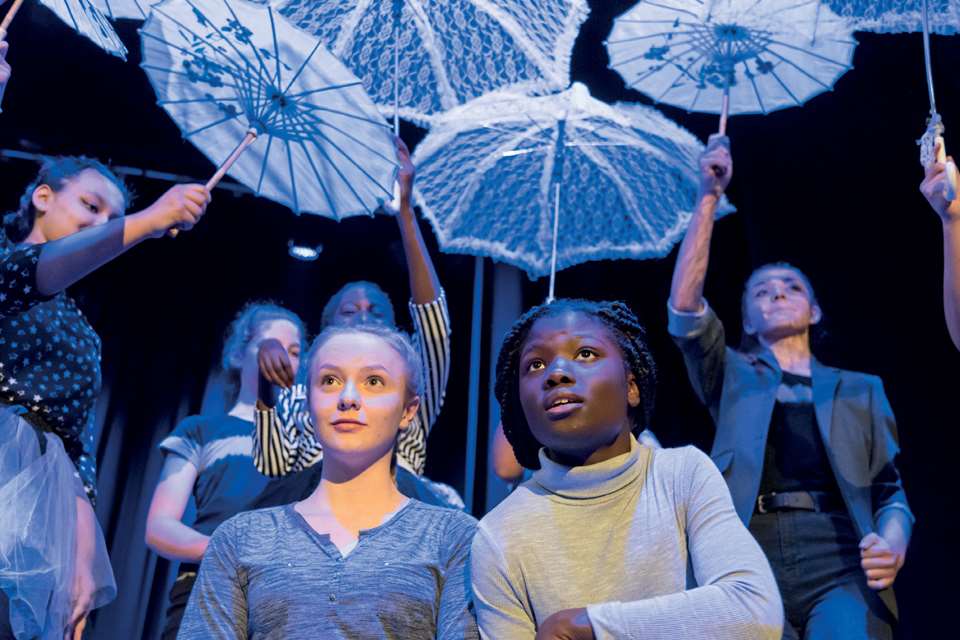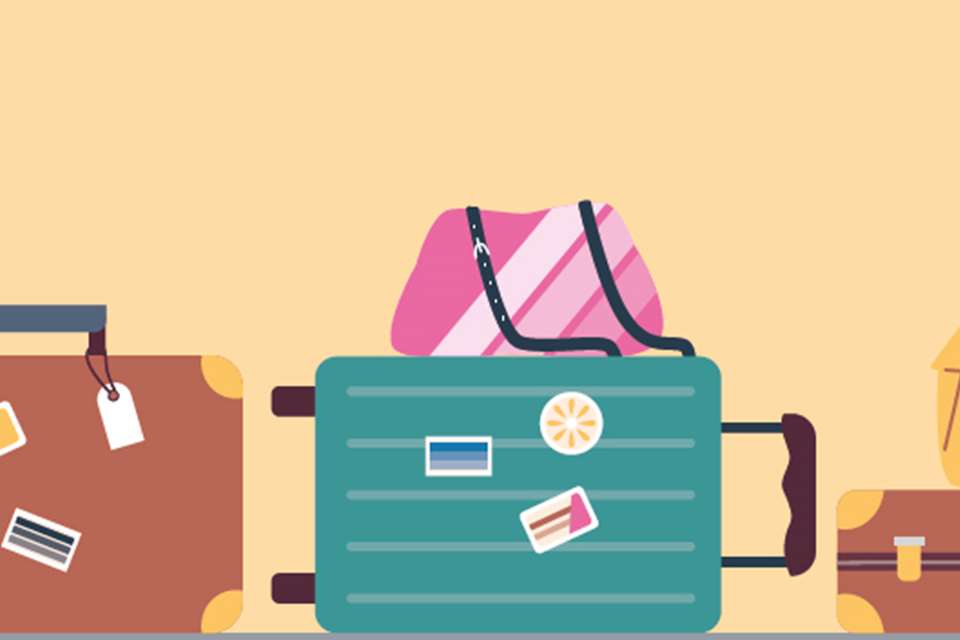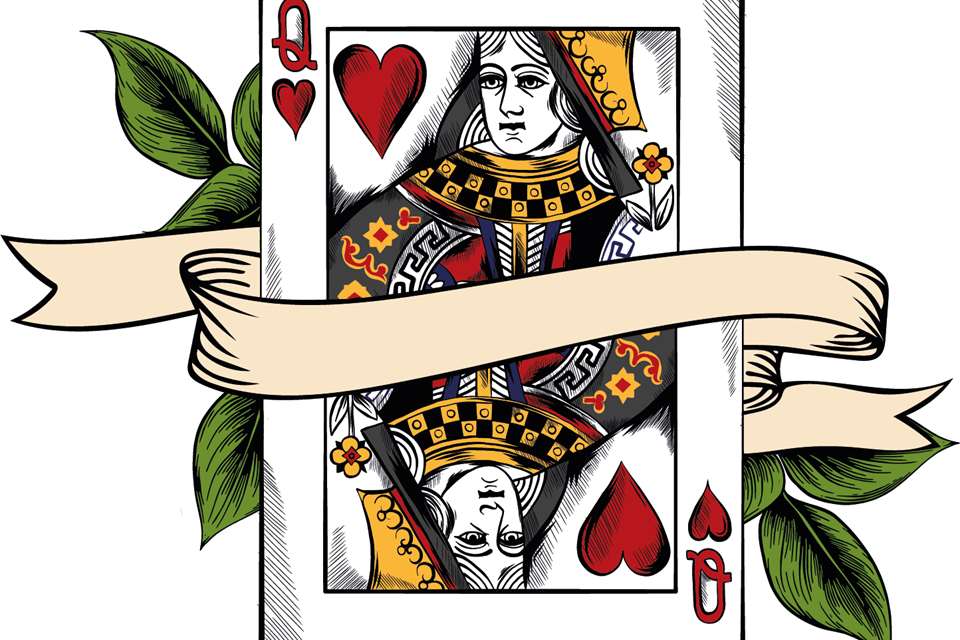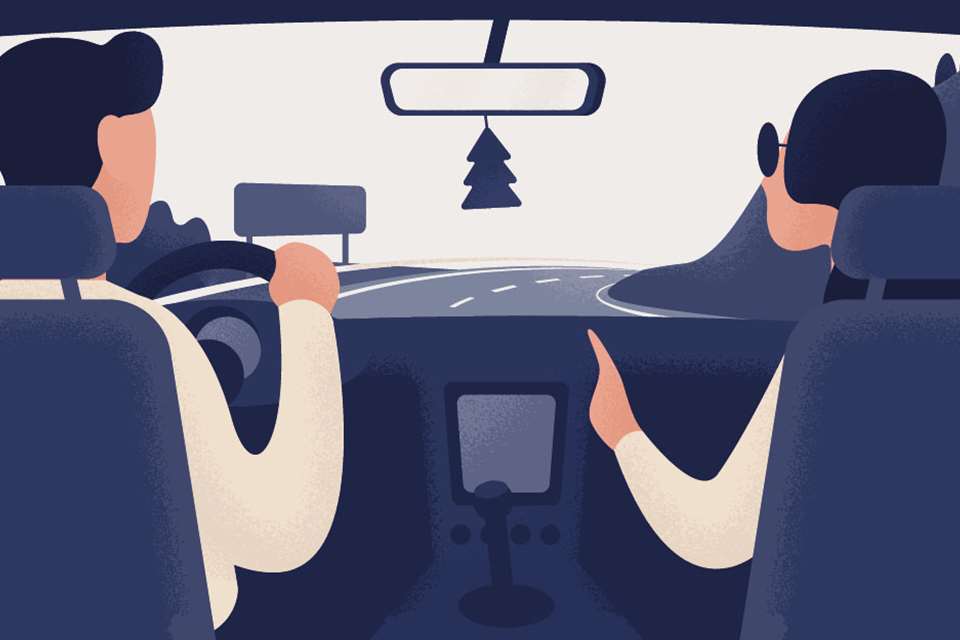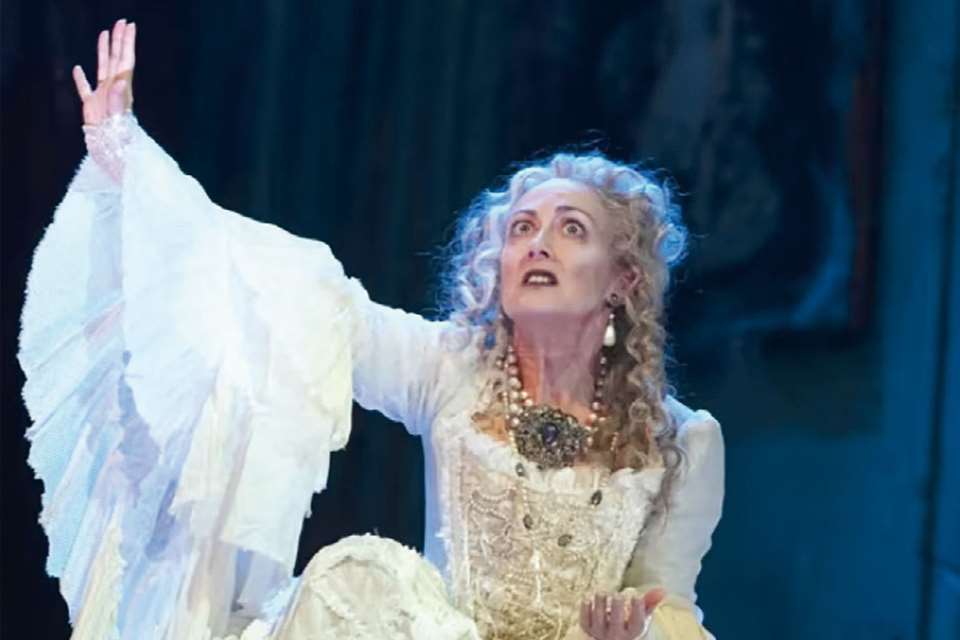One-off workshop: Teaching Shakespeare through soundscapes
Louise Tondeur
Sunday, October 1, 2023
Focusing on a lesser-discussed tactic when teaching Shakespeare, Dr Louise Tondeur addresses how we can use soundscapes to tackle the Bard's work with students.
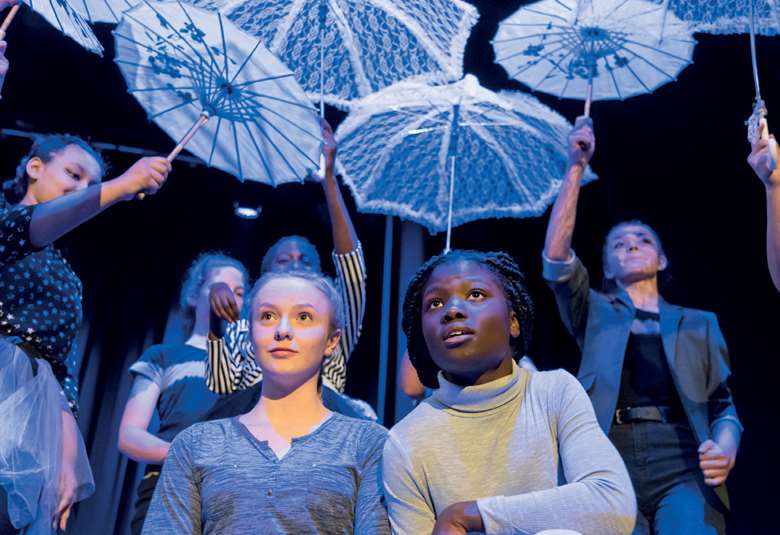
Coram Shakeseare Schools Fest
In this session, students create sound effects based on a theme from Shakespeare, with accompanying movement – and the option of adding percussion, other music and sound effects later). They work together as a chorus, using the whole space. The script is added on top to create a performance.
Learning outcomesStudents will learn how to:
- Pair movement and sound in an accessible way
- Create an atmosphere on stage
- Use voice and body to create soundscapes
- Rehearse and perform a scripted scene
Warm up
Lead a basic physical and vocal warm up. Go through the body from top to toe, focusing on moving different body parts in turn. Practise making accompanying sounds.
Movement exercise
Apply adjectives to parts of the body, such as spiky feet or scary hands, thinking particularly about adding expression or emotion. Practise making the movements precise. Suggesting scenarios can help. For instance, act as if:
- You've just heard a juicy bit of gossip
- You're examining a new outfit in the mirror
Alternatively use suggestions indicative of your chosen play. For example:
- Witchy fingers
- Climbing the rigging
- Casting a spell
- Sword fighting
- Turning invisible
Vocal exercise
Go through the vowel sounds by adding vocalisations to particular movements. This could involve opening the arms for the sound ‘ahhh’ or asking students to feign mock horror with the sound ‘eeek’. They could creep on the spot for ‘yiiiiikes’, eavesdrop at a door for ‘ooooooh’, or spot someone in the distance with ‘cooooeeee’ or tread in mud for ‘uuugghhhh’.
Using the space
Students spread out and work on their favourite movements and vocalisations. Add high, medium and low levels to the movements. For example, move as if you are:
- Reaching something from a high shelf
- Crouching behind a door to hide
- In a slow-motion replay
Focusing on vowel sounds again, match sounds to movements. Someone reaching for a high shelf might use ‘oo, oo, oo, ahhhh’, for example.
Next, introduce dynamism to the movements, stretching and retracting or sending the weight towards left, right, front and back.
Experimenting with words and phrases
Introduce a few words and phrases from the play you are studying. A good choice would be Act 1 Scene 1 of The Tempest as it has several short lines and phrases in it. Mime the scene, getting students to use to the words and the different vocal effects possible. Have them say the words in different ways. Try happy, angry, devious, surprised, disappointed, confident, shy, desperate or nostalgic, for instance. Repeat this paired movement and vocalisation activity using words and phrases from the scene.
A simple soundscape
Give the students an appropriate scenario and have them invent sound effects and movements for it. A few ideas for a scenario could include: a storm, a fight, administering a love potion, an evil spell.
Use the words and phrases from the scene that you've already practised to create a rhythm, with accompanying sound effects and gestures.
Working as a chorus
Emphasise the idea of creating sound together. Suggest choral movements and sound effects (made with voice and body) based on prompts, such as:
- The sea on a calm day, a windy day, or during a storm
- Witch-like sounds and gestures, such as laughter, a cauldron spitting or rhythmic dancing
Focus on the gradual development of the movements and sounds, of crescendo and diminuendo, and on using the whole space.
Once you've established the movements and the sound effects made with body and voice, you could introduce percussion instruments (even DIY or ‘household’ percussion instruments like those used in Stomp) and external sound effects and music.
Soundscapes and scripts
Students rehearse a scene from the play using only movement and sound, plus a few choice words and phrases. For example, they could create a scene called ‘a storm at sea’. Focus particularly on the rhythm.
Next, introduce the script. Use the whole class as a chorus responsible for the sounds, rhythm and accompanying movements. Distribute the script amongst several volunteers. The challenge is for the chorus to keep up the soundscape and choreography during the whole performance. Rehearse a couple of times before adding percussion, music and sound effects and adjusting the lighting.
Words and phrases from Act 1:1 of The Tempest:
- Boatswain!
- Here, master: what cheer?
- Yare! Yare!
- Lower!
- Keep below
- A plague upon this howling!
- Lay her a-hold!
- All lost
- To prayers! To prayers!
- Mercy on us
- We split! We split!
- Farewell
Music and sound effects
-
Sea: youtu.be/Xfks6jiS_iI
-
Storm: youtu.be/nDq6TstdEi8
-
Lightning: youtu.be/ki4a4d7wJRQ
-
Witch's laugh: youtu.be/TFAf_xgNjpE
-
Magical sounds: youtu.be/3UxwmfU3rJQ
-
Mendelssohn's Overture to A Midsummer Night's Dream: youtu.be/BX9oRQkkOOw
-
Tchaikovsky's Tempest: youtu.be/KyID7dxY4qo
-
Macbeth soundtrack: youtu.be/qmPZbyYmndc
Use the Laban efforts to choreograph the movements then add accompanying sound effects. They are:
- Wring
- Press
- Flick
- Dab
- Glide
- Float
- Punch
- Slash
Top tips
- The opening of The Tempest is ideal for this. Parts of Macbeth Act 4 Scene 1 or A Midsummer Night's Dream Act 2 Scene 2 also work.
- Build the atmosphere from the start. Introduce stage lights if possible.
- Using a circle to structure the warm-up means you can call students back to the circle later, which helps with classroom management.
- Emphasise the rehearsal aspects. Being the director throughout enhances this idea.
- For the final part of the session, direct the whole class, or form small groups.
Find out more: theatrefolk.com/blog/the-eight-efforts-laban-movement



